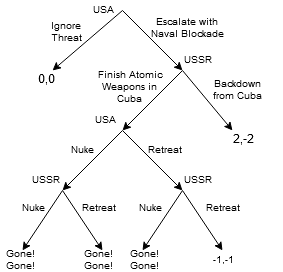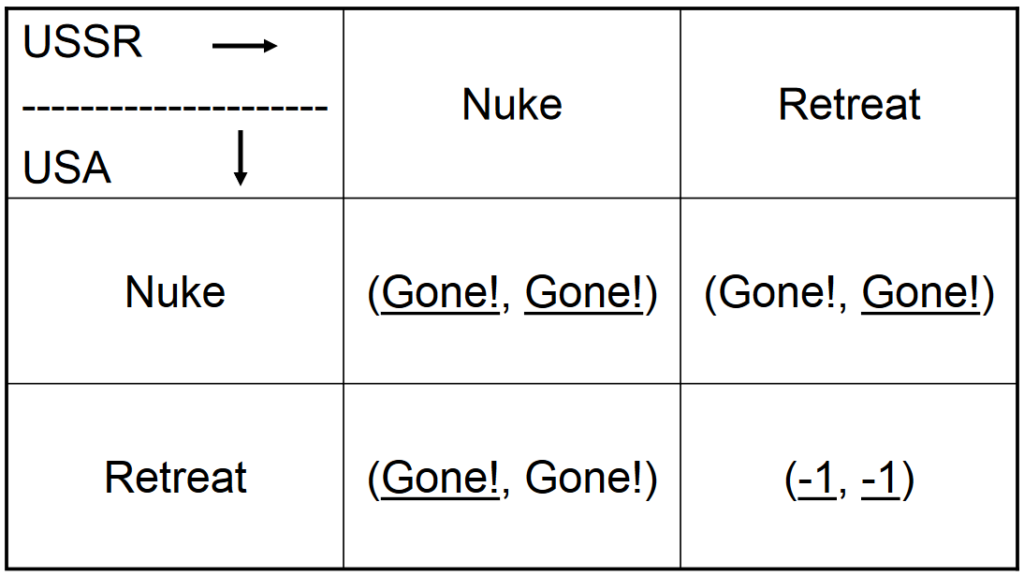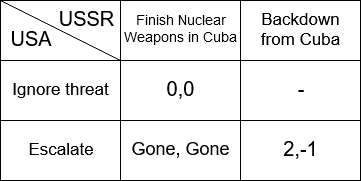The Cuban Missile Crisis began in October 1962 when the Soviet Union (USSR) started placing missile launchers in their allied country, Cuba. The United States, then led by President John F. Kennedy, feared that this would give the USSR the ability to strike the USA with nuclear weapons with little to no warning to launch a retaliation. During this crisis, the 2 global superpowers negotiated and played likely one of the most dangerous and tense applications of game theory in history.
Following the USA discovery of the USSR installing missiles in Cuba, the game theory situation would have been represented in this manner

If the US would have ignored the situation, both powers would be in a neutral standoff with US having missiles in Turkey pointing to the USSR and conversely, the USSR having missiles in Cuba pointing at the US.
If the US chose to escalate the situation by implementing a naval blockade around Cuba to prevent the USSR from sending more materials and finishing construction, the USSR would have had 2 options, back down or continue and find a way to finish installing atomic weapons in Cuba. Had the USSR chosen to continue installing, it would have lead to what we can call the atomic subgame

This is what’s usually referred to as Mutually Assured Destruction (MAD). Both countries assert that as soon as the enemy launches a nuke, they will respond in kind, leading to severe or outright destruction for both countries. We can see that here is a Nash Equilibrium on (-1, -1) and it is in both countries’ best interests to retreat from nuclear war. However, this is not what the US chose to do! Because the US was unwilling to accept a “-1” and allow USSR atomic weapons in Cuba, what the President Kennedy chose to do instead was threatening to use force and attack if the USSR continued to attempt to install weapons in Cuba, ie, a (Gone!, Gone!). This would lead to the game as below

The USSR wasn’t going to back down from Cuba if the USA ignore the threat and the US had already escalated with a naval blockade. We can then see that there is a Nash Equilibrium at (2, -1) and so by the USA choosing to escalate, the best decision from the USSR was to back down. This is what ended up happening as leader Khrushchev of the USSR would announce a full withdrawal from Cuba in the following weeks.
Again, this was only possible because the USA assured that they would have attacked if the USSR maintained weapons in Cuba, otherwise the (Gone, Gone) would have been (-1, -1) instead and the USSR would likely have finished installing weapons and both countries maintained a tense mutually assured destruction standoff
